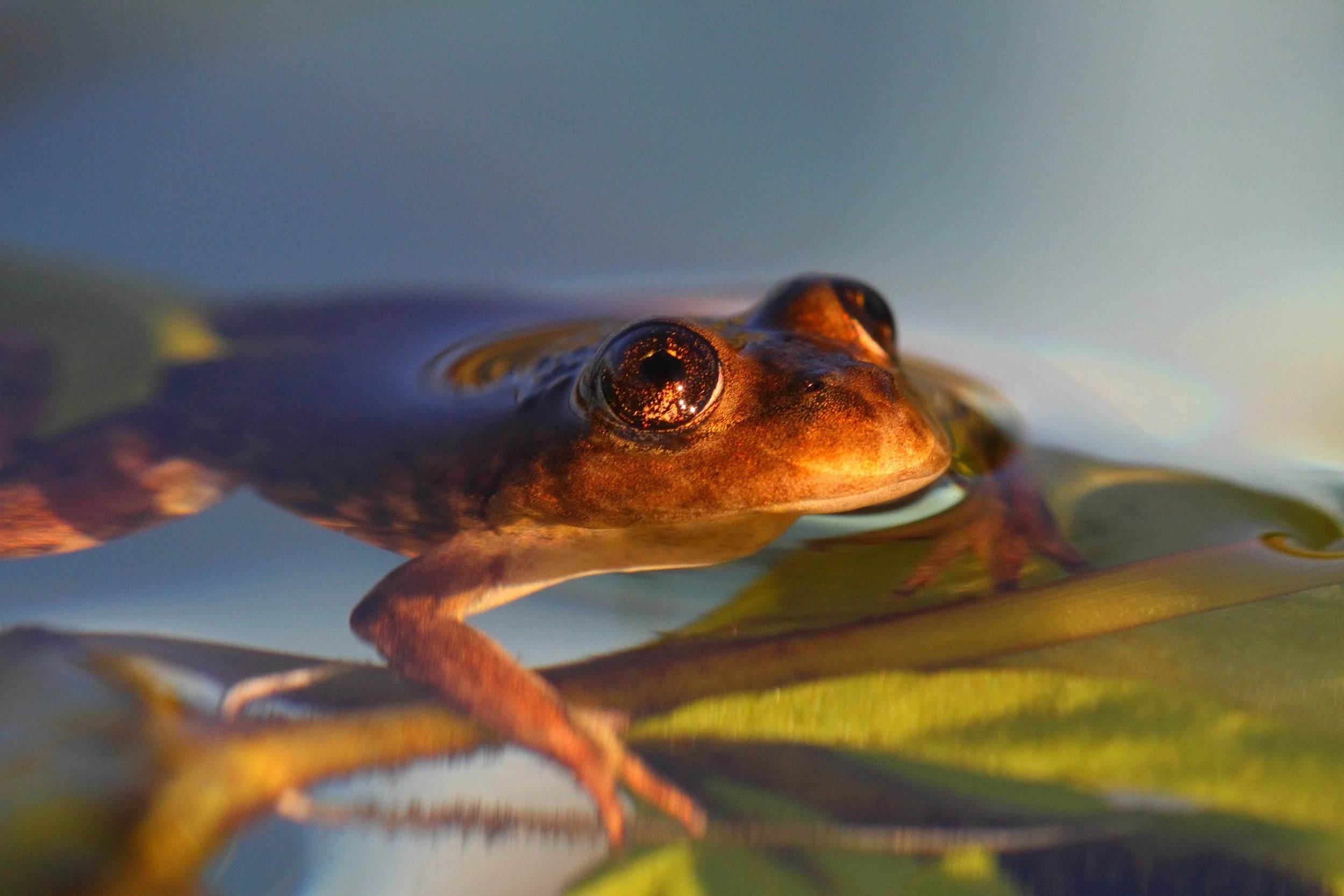Argentina’s Dr Federico Kacoliris Wins 2025 Whitley Award to Expand Protection for El Rincón Frog Habitat in Somuncura Plateau
©Whitley Fund For Nature | Hernán Povedano
Words by Whitley Fund For Nature
Covered by Lucy Jane Morris
IG: @conkernaturemagazine
IG: @lucymorriswild
First published 30th April at 8:00PM GMT
UK charity, the Whitley Fund for Nature (WFN), is recognising Dr Federico Kacoliris with a 2025 Whitley Award for his work to expand protection for the most threatened amphibian in Argentina: the El Rincón stream frog.
“The El Rincón stream frog is the most threatened amphibian of Argentina and one of the most endangered amphibians worldwide.”
The conservation scientist has brought the frog back from the brink of extinction as part of a programme to protect species native to the vast volcanic Somuncura Plateau in north Patagonia. The thermal waters of the Valcheta Stream, which runs through the plateau, enabled the evolution of the frog and the Naked Characin fish. Federico and his team’s work spans 5,000 km2 and includes working with local communities to reduce conflict between ranchers and native predators such as cougars and Andean foxes.
Charity Patron, HRH The Princess Royal, will present the £50,000 Whitley Award on 30 April at the Royal Geographical Society. The event will be livestreamed to YouTube.
With Whitley Award funding, the team plans to mitigate two key threats to the frog: overgrazing and trampling of frog habitat by cattle, as well as limiting access of invasive trout which shrank frog habitat into isolated patches.
Habitat restoration has been key to the revival in El Rincón frog numbers as well as a captive breeding and rewilding programme. The founder and president of Fundación Somuncura, and his team, have expanded by 15 percent the habitat for the frog. The additional 1.4 km of restored habitat is now supporting healthier and denser populations of the frogs where they did not previously exist.
The team plans to increase protection for the frog to the full range of the headwaters of the Valcheta Stream where they lived before the introduction of invasive rainbow trout. The fish forced the frogs to recede to tributaries, where some isolated populations went extinct. The current estimate for the population in the wild is fewer than 5,000 adult individuals.
An almost wholly aquatic amphibian, the frog is known locally as the Valcheta Frog, Somuncura Frog and the Chipauquil Frog. A rewilding plan which enabled local school children to adopt frogs released into restored habitat helped to win support for Fundación Somuncura’s work.
Federico’s team built Argentina’s first ex situ facility for endangered amphibians at the University of La Plata where a population of the frogs was established after going extinct locally. The translocated individuals were brought to a restored habitat and school children in a local village, Chipauquil, helped to monitor them after releasing the frogs into restored habitat. They were able to adopt and name individuals thanks to specific markers called Visible Implant Elastomers.
“Protected areas are not enough to save species from extinction. Supporting local efforts to protect species and habitats, even within protected areas, is key to ensure biodiversity conservation.”
Federico’s project will ensure a supply of high quality water for the remote local communities in the desert landscape where freshwater sources are scarce and play a key role in the coexistence of local wildlife and people. Across the wider region, expanded use of guardian dogs will reduce conflict between ranchers and predators, such as cougars, which prey on livestock. With the nearest city 200 km away, the Somuncura Plateau is sparsely inhabited by small farm holders and native communities.
Cattle ranching however, has expanded over the last decade as ranchers switched to cattle after losing sheep to predation. This disrupted the ecological balance locally with cattle having a bigger impact on frog habitat. Federico's guardian dog programme has several goals: to avoid ranchers killing cougars and Andean foxes, which are crucial to the ecosystem, but also to encourage ranchers to return to their historical farming of sheep.
Fundación Somuncura plans to promote eco-tourism to the remote zone. A volcanic table the size of Belgium, the Somuncura Plateau is known as the “rock that speaks’ because of the sound of the wind on the rocks. The Valcheta Stream is an isolated watercourse that starts and ends in the plateau.
Fundación Somuncura recently acquired and now manages 20,000 hectares together with another local NGO, Fundación Hábitat & Desarrollo. This is protecting several other native species such as Guanacos, Andean foxes, Pumas, Condors. The team aims to help with the training of ten new professional guides hired from the local community in Chipauquil and to engage local environmental authorities in recognising the private reserve.












































UK charity the Whitley Fund for Nature (WFN) is recognising seven outstanding conservationists with 2025 Whitley Awards and £400,000 ($529,000) in funding to sustain their work to revive wildlife species in Rwanda, Brazil, Colombia, Argentina, Nepal, Indonesia and Malaysia.
At a time when governments are cutting overseas aid, the funding will help to ensure a future for species and their broader ecosystems, including jaguars, Bornean elephants, brown spider monkeys, Javan gibbons, the El Rincón stream frog, Grey Crowned Cranes, as well as Yew trees and orchids.